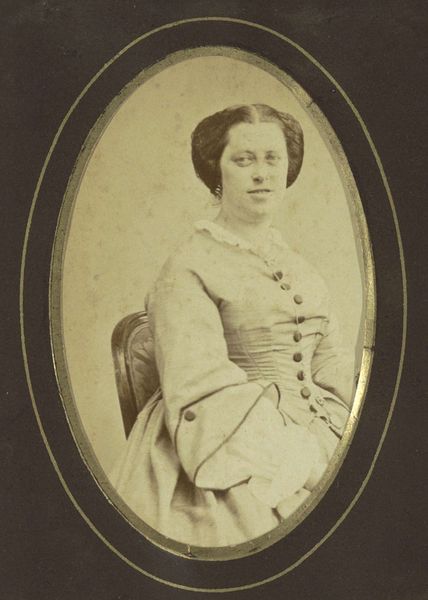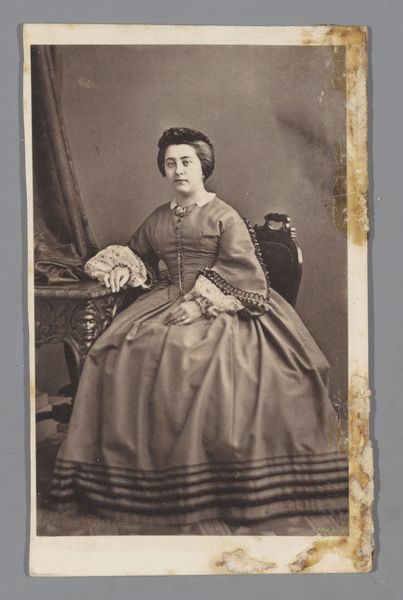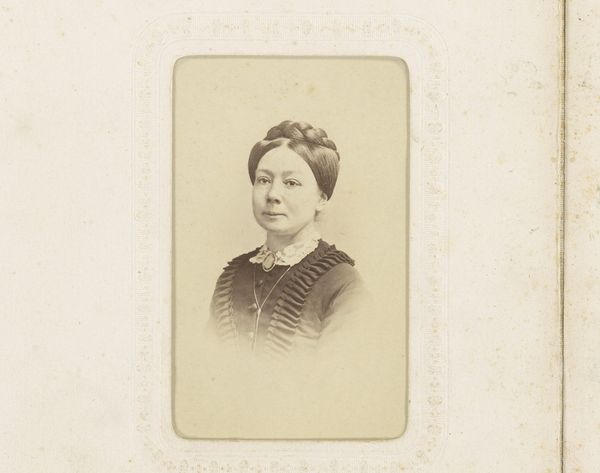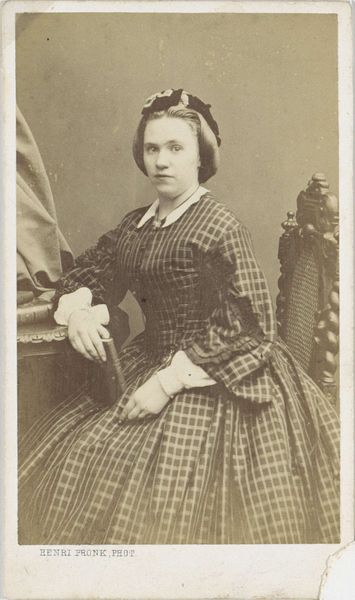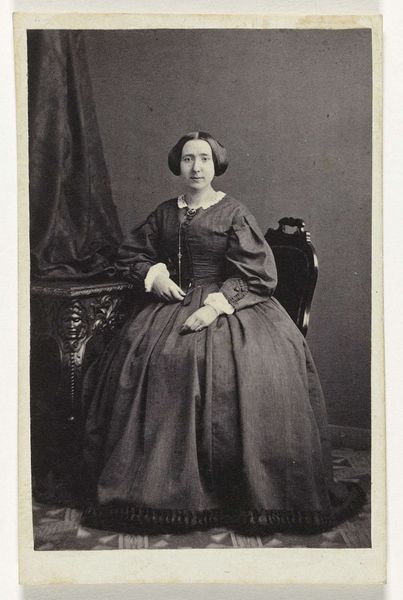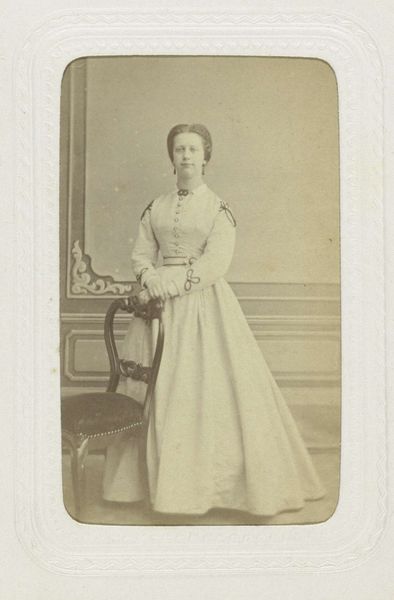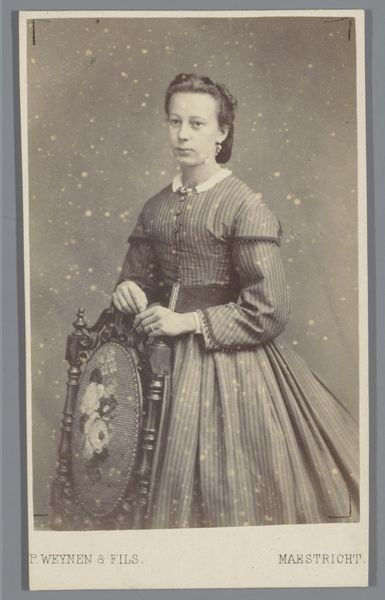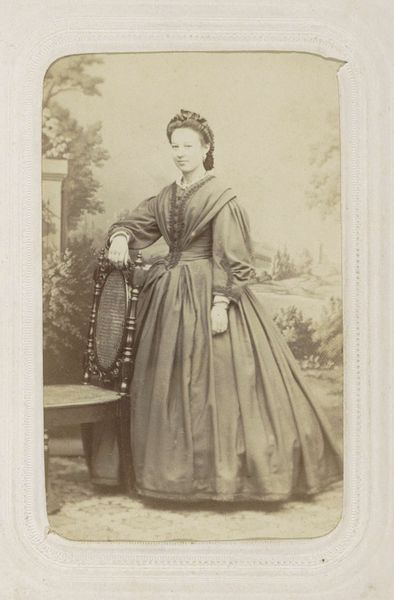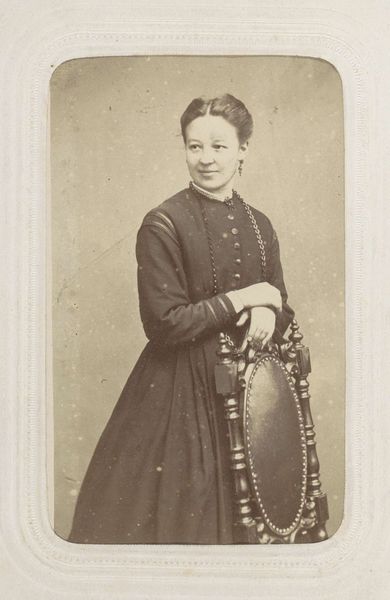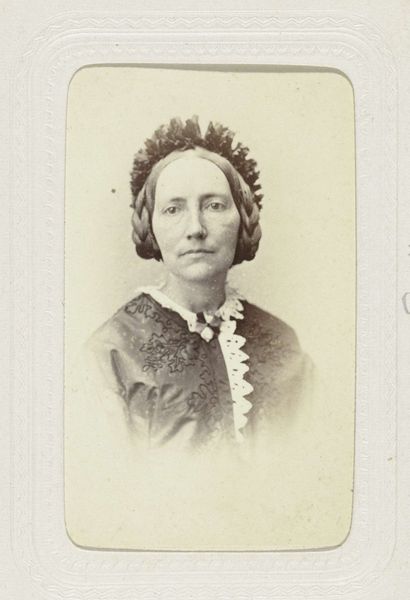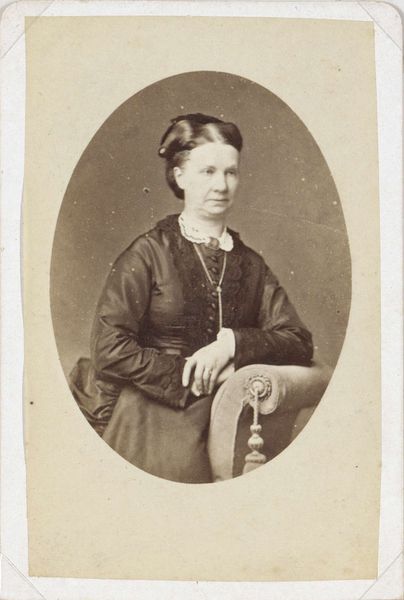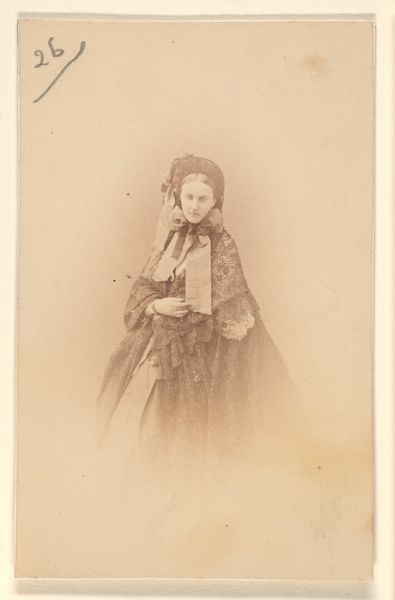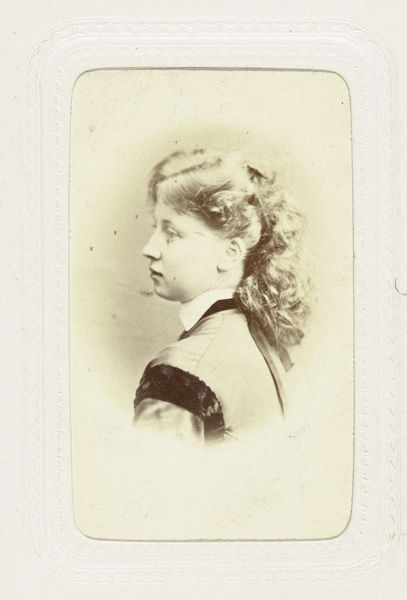
photography
#
portrait
#
photography
#
genre-painting
#
realism
Dimensions: height 98 mm, width 62 mm
Copyright: Rijks Museum: Open Domain
Curator: This is a portrait, likely a photographic carte-de-visite, entitled "Portret van een vrouw met opgestoken haar," placing it in the Realist period between 1865 and 1890. The image, held within the Rijksmuseum collection, presents a fascinating look at period style and photographic practice. Editor: My first thought is of captured time, a stillness radiating from this image. The neutral tone gives it an ethereal feel; I immediately think of memory. There's an intimacy to it. Curator: Indeed. While its charm is undeniable, notice how the pose and composition intentionally follow classical portrait conventions—the slightly averted gaze, the deliberate hand placement, even the subdued colour palette—suggesting an idealised representation. It's less about capturing an exact likeness and more about crafting an image of social grace and dignity. The jewelry itself, although minimal, would signal a degree of refinement, if not wealth. Editor: The photographic style of this piece is so revealing; look at how light is being used to define the face and clothes. It looks both straightforward but at the same time controlled, like a semiotic operation designed to reinforce social values and decorum. The soft focus is strategically blurring edges. Curator: It reminds us how photographs of this era often acted as signifiers, creating or solidifying someone’s status within a social framework, functioning as more than just representations of a moment. A display of decorum was itself a cultural currency of the period. The woman’s identity fades in significance, overtaken by what she is made to symbolize, not only by the pose, dress, hairstyle, and gaze, but also by this whole framework that the technique helped support. Editor: So this is essentially how representation becomes a construction. Through stylistic choices like controlled lighting, we perceive her not as she may have been, but according to what the culture expected from a portrait of a woman. What seemed transparent is really a very loaded image. Curator: Exactly. These period practices carry with them a heavy weight of social conventions—a silent language coded within the image. The sitter perhaps thought it would create her image; it may have confined her, instead, within these frames. Editor: A really interesting consideration, bringing what is left unseen in an image to the forefront, too. It is the play between the form and the content, what the image portrays versus what it conceals, that stays with me.
Comments
No comments
Be the first to comment and join the conversation on the ultimate creative platform.
